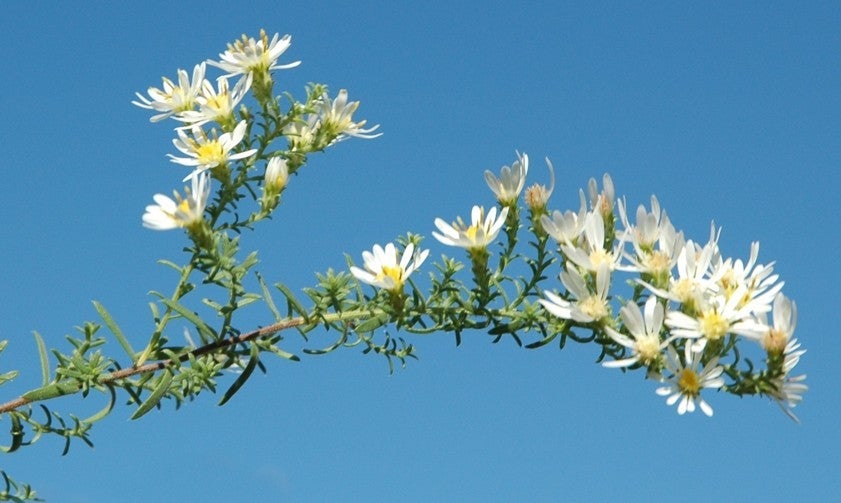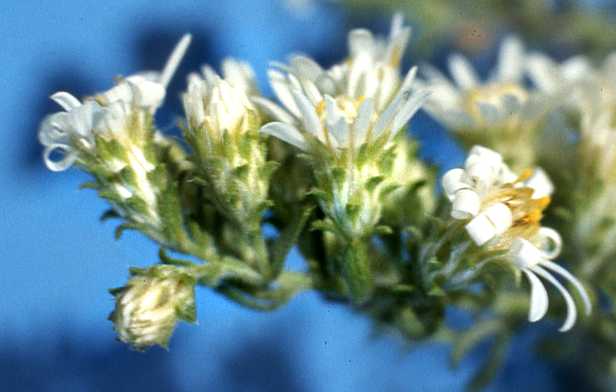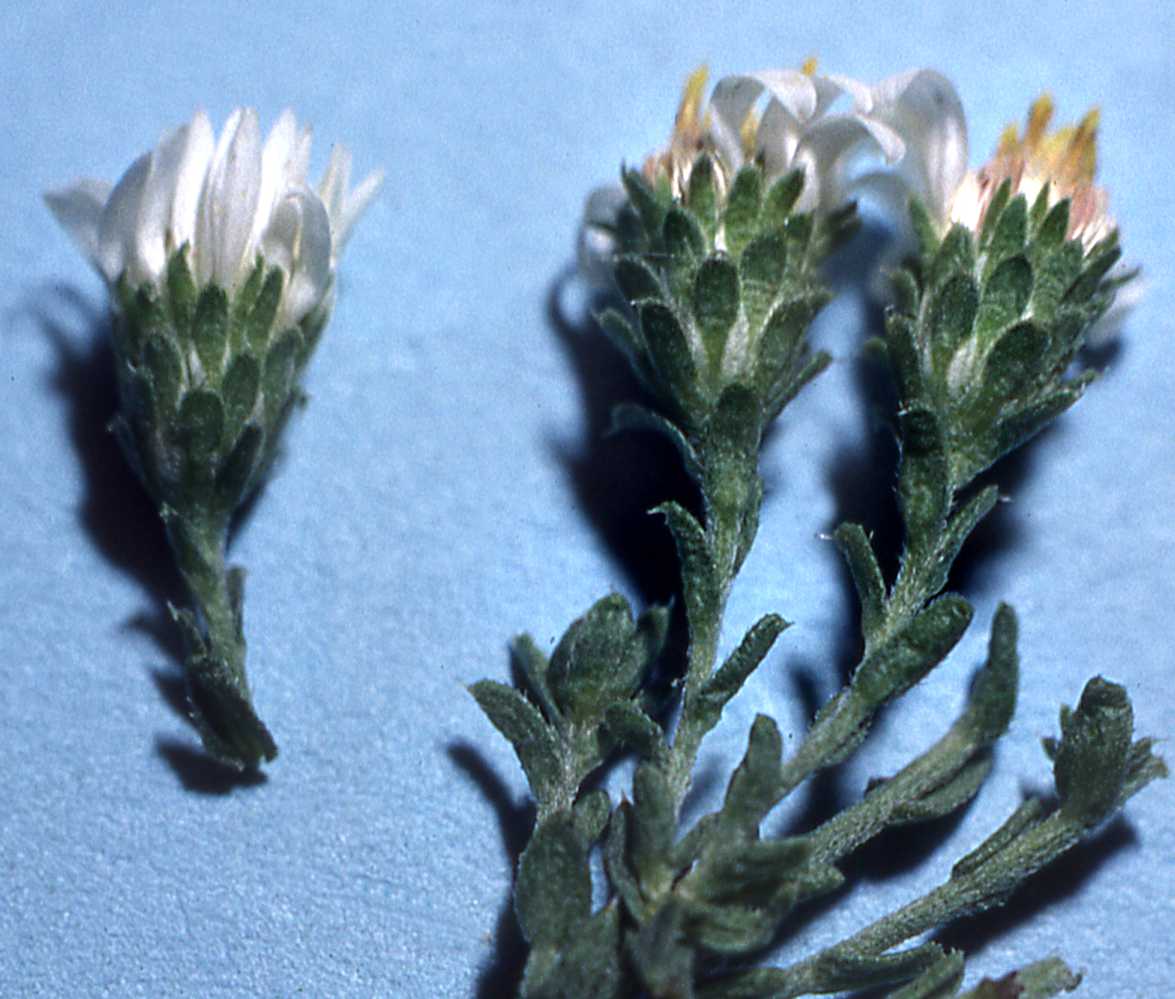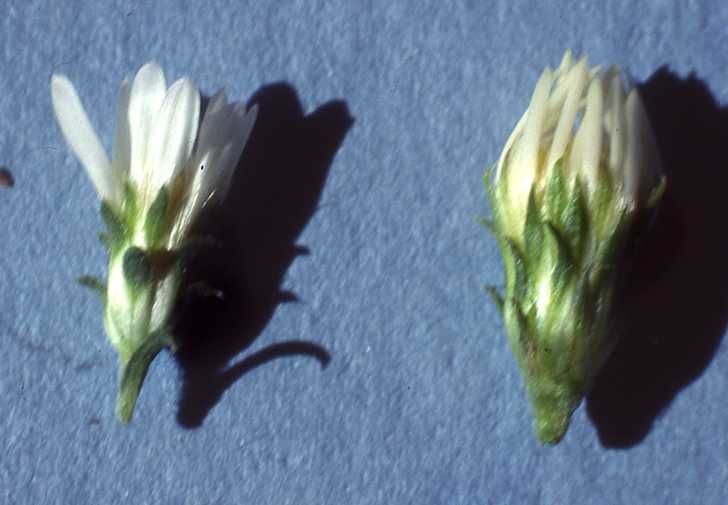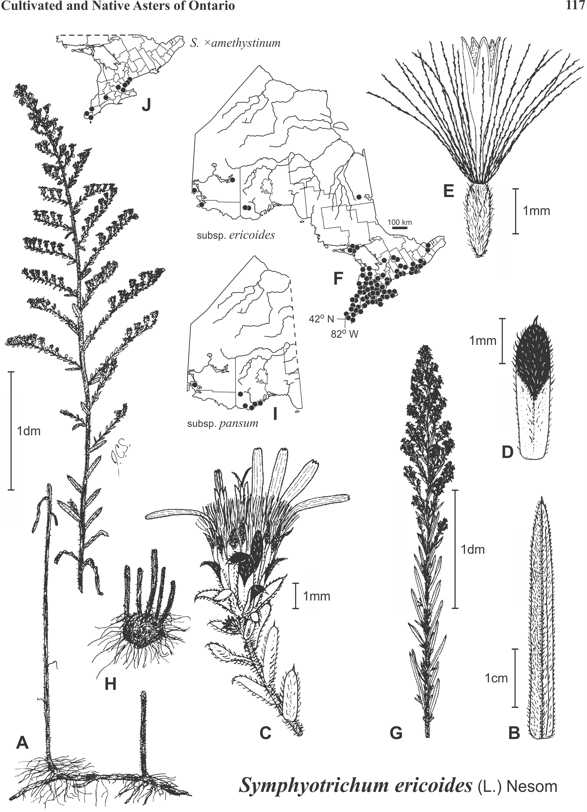White Heath Aster, aster éricoïde
Symphyotrichum ericoides (L.) G.L. Nesom is native to open, dry to moist, well drained, sandy or gravelly, disturbed soils, prairies, glades, dunes, fields, shores, railroad rights-of-way, roadsides, and lower elevations in mountains from British Columbia and northern Alberta to Massachusetts south to Mexico in the west and Missouri in the east (Brouillet et al. 2006 FNA). The species is distinguished by its densely hairy stems and leaves, spinulose-tipped, linear oblong leaves, usually small heads with 2.5–4.5(–5) mm high involucres, (8–)10–18(–20) usually white ray florets, spine-tipped phyllaries (spines white or clear), and small fruits with 3-4 mm long pappus bristles. The species is predominant diploid with x=5 (2n=10) over the range with tetraploids (2n=20) occurring the central and southwestern portion of the range. The cytogeography of the species was presented in Semple et al. (2025).
The inflorescence tends to be more compact and densely branched than in the usually larger to much large headed S. falcatum. Tetraploids of var. ericoides on the eastern prairies can be difficult to distinguish from S. falcatum.
Symphyotrichum ericoides resembles S. pilosum var. pilosum, which has larger heads, longer rays, and phyllaries that are not spine-tipped, though the revolute margins can make them appear so.
A number of aster cultivars are sold under the name "Aster ericoides." These are all derived from European garden plants and are either cultivars of S. dumosum, S. lateriflorum, S. pilosum, or S. racemosum, or hybrids involving one of those species and another taxon. The misapplication of the epithet ericoides dates back to the nineteenth century and has persisted in the horticultural literature.
Two subspecies and four weakly separated varieties were recognized by A. G. Jones (1978) in S. ericoides. Only the subspecies are recognized here:
- subsp. ericoides (plants colonial, rhizomatous, not cormoid; involucres cylindro-campanulate when fresh)
- subsp. pansum (S.F. Blake) G.L. Nesom (plants cespitose, with cormoid caudices, not strongly rhizomatous; involucres broadly campanulate when fresh)
The range of subsp. ericoides is very patchy in the west and the southeast. The range of subsp. pansum needs further study and is presented as very much a draft version.
Jones, A.G. 1978. The taxonomy of Aster section Multiflori (Asteraceae) I. nomenclatural review and formal presentation of taxa. Rhodora 80: 319-357.
Semple, J.C., S.B. Heard and L. Brouillet. 2002. Cultivated and native asters of Ontario (Compositae: Astereae): Aster L. (including Asteromoea Blume, Diplactis Raf. Kalimeris (Cass.) Cass.), Callistephus Cass., Galatella Cass., Doellingeria Nees, Oclemena E.L. Greene, Eurybia (Cass.) S.F. Gray, Canadanthus Nesom, and Symphyotrichum Nees (including Virgulus Raf.). U.Waterloo Biology Series 41: 1-134.
Semple, J.C., J.G. Chmielewski, L. Brouillet and M. Windham. 2025. The cytogeography Symphyotrichum ericoides and S. falcatum (Asteraceae: Astereae). Phytoneuron 2025-59. 1-16.
Last revised 8 December 2025 by J.C. Semple
© 2025 J.C. Semple, including all photographs unless otherwise indicated
1-8. Symphotrichum ericoides. 1. Habit, subsp. ericoides, Semple 2051, Lennox and Addington Co., Ontario. 2. Habit, subsp. pansum, Semple & Brouillet 4400, Lewis Co., Idaho. 3. Cormoid rootstocks, ssp. pansum, Semple & Brouillet 4442, Wyoming. 4. Flowering branch, subsp. ericoides, Ontario. 5. Heads, subsp. ericoides, S 2051. 6. Heads, subsp. pansum, S & Bt 4442. 7. Head comparison of subsp. ericoides (left 5217) with Sy. pilosum (5220), Missouri. 8. Line drawing illustration of Sy. ericoides, Fig. 58 in Semple et al. (2002).











